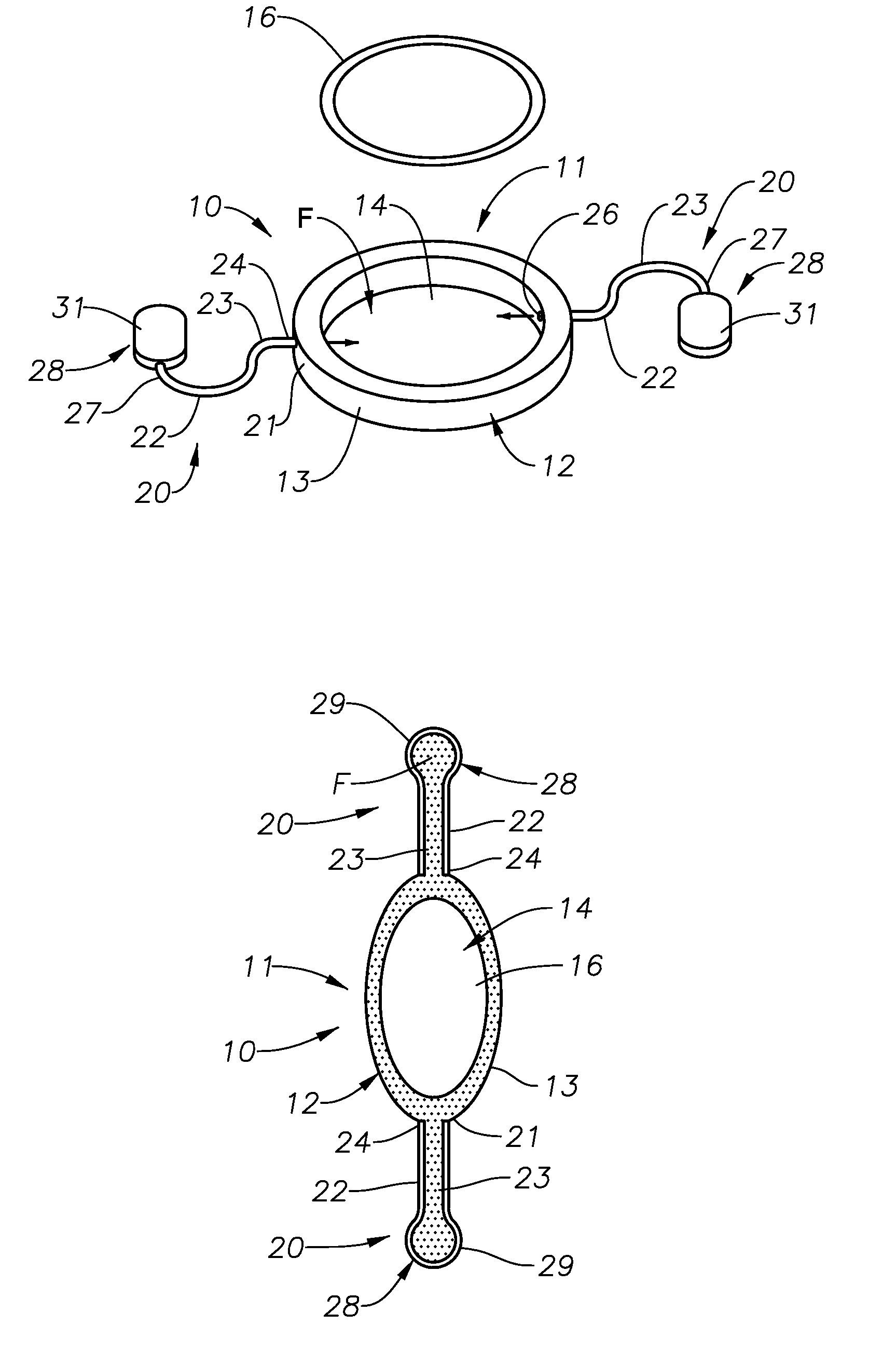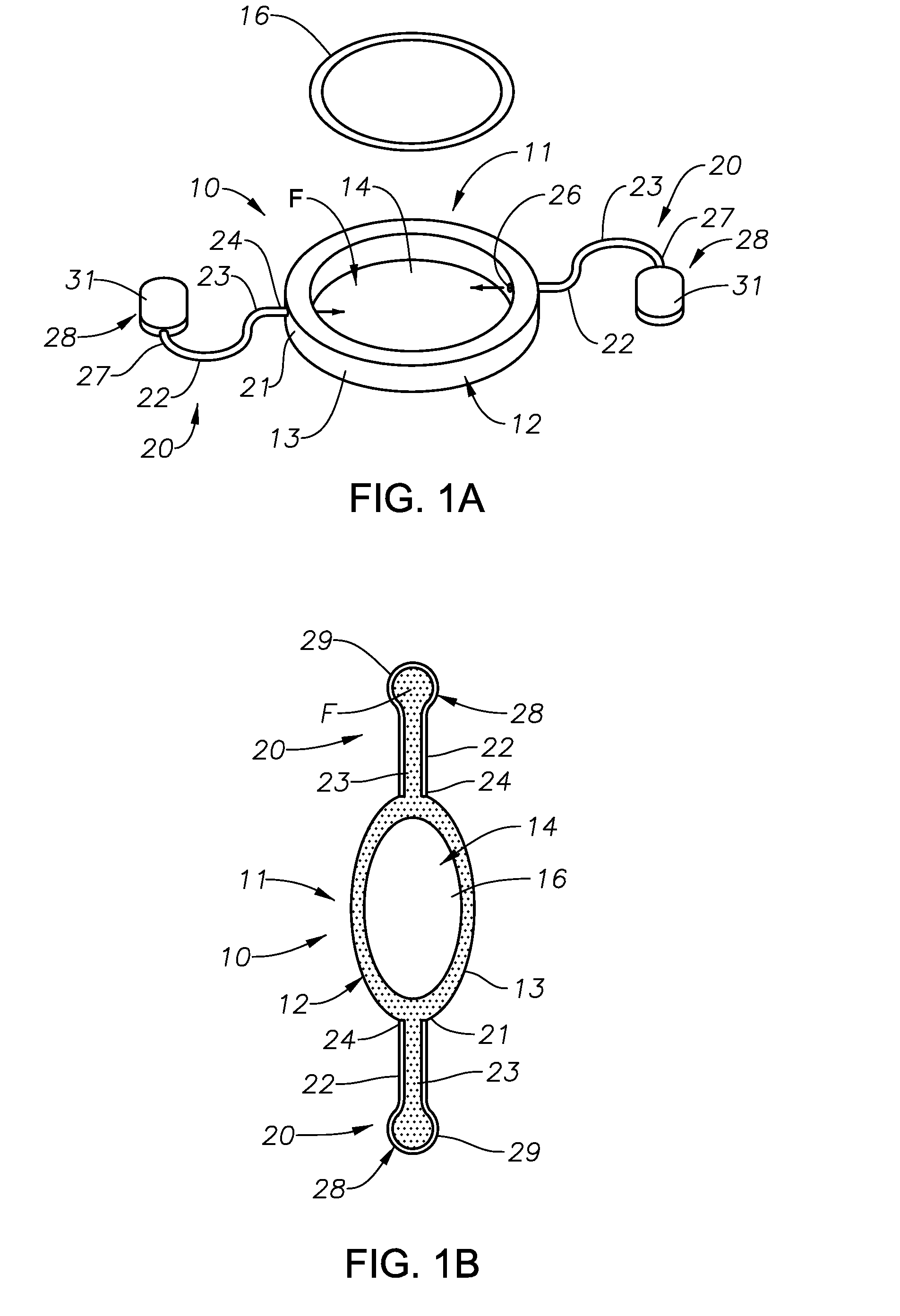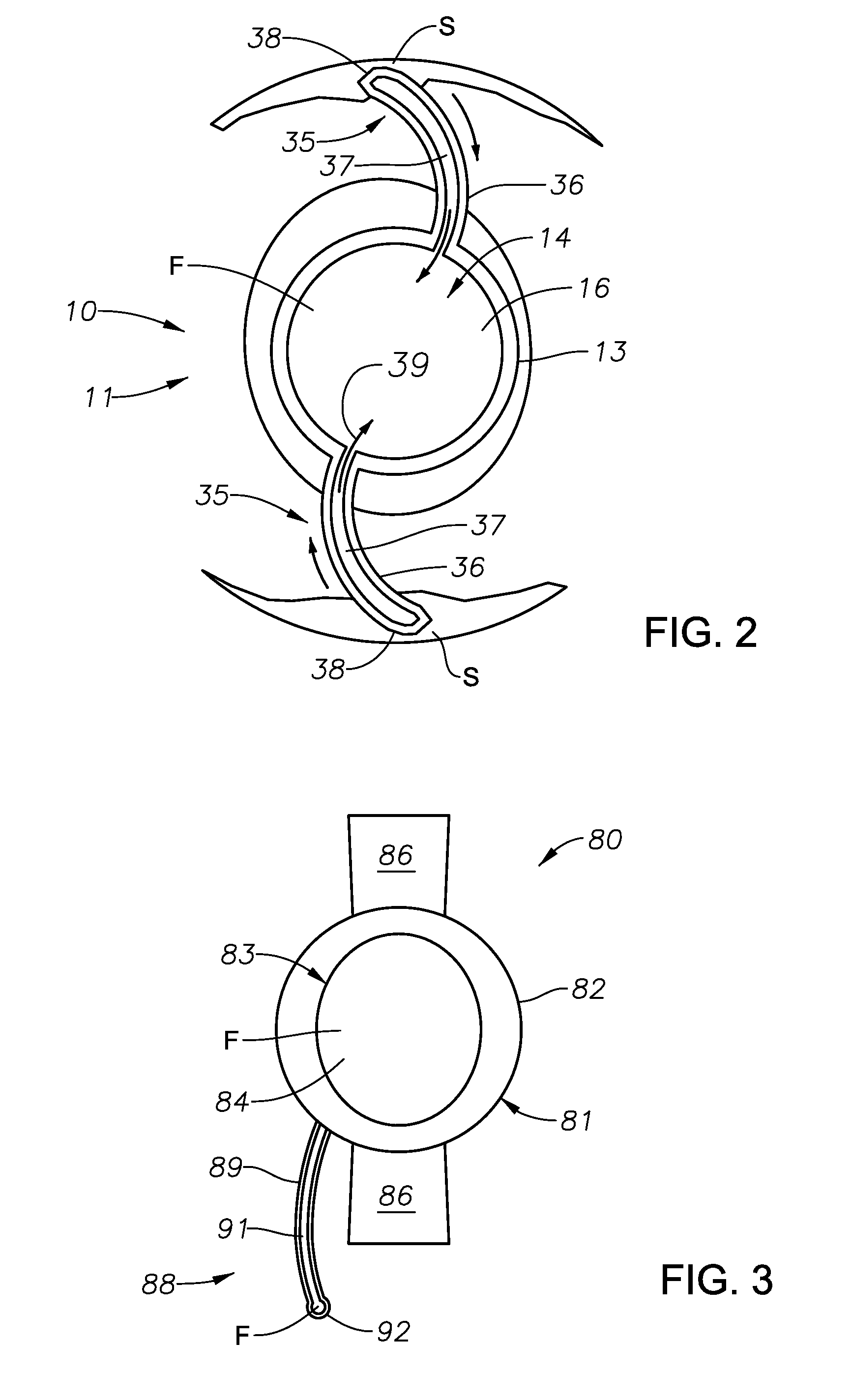Accommodating intraocular lens
a technology for accommodating iols and intraocular lenses, applied in intraocular lenses, prostheses, medical science, etc., can solve the problems of significantly adversely affecting the vision of patients, and unable to achieve presbyopic accommodating iol designs with limited success, so as to achieve the effect of correcting the posterior capsular opacification
- Summary
- Abstract
- Description
- Claims
- Application Information
AI Technical Summary
Benefits of technology
Problems solved by technology
Method used
Image
Examples
Embodiment Construction
[0016]FIGS. 1A-3 illustrate various embodiments of accommodating intraocular lenses (IOLs) according to the principles of the present invention. The IOLs are designed to be inserted into the eye of a patient and function in response to the natural accommodative forces of the patient's eye to adjust the optical power of the lenses, and therefore the vision of the patient, to improve focus and clarity of the patient's vision as to nearer or distant objects. In each of the illustrated embodiments, the IOLs generally can be formed of a soft, flexible acrylic, silicone or hydrogel material, which can include hydrophyllic as well as hydrophobic acrylic, silicone or hydrogel lens materials as will be understood in the art. For example, the IOLs can be formed from AcrySof® acrylic intraocular lens materials from Alcon Laboratories, Inc. The present IOUs further can contain or be filled with a transparent, aqueous fluid material such as a liquid, gel or flexible solid material that additiona...
PUM
 Login to View More
Login to View More Abstract
Description
Claims
Application Information
 Login to View More
Login to View More - R&D
- Intellectual Property
- Life Sciences
- Materials
- Tech Scout
- Unparalleled Data Quality
- Higher Quality Content
- 60% Fewer Hallucinations
Browse by: Latest US Patents, China's latest patents, Technical Efficacy Thesaurus, Application Domain, Technology Topic, Popular Technical Reports.
© 2025 PatSnap. All rights reserved.Legal|Privacy policy|Modern Slavery Act Transparency Statement|Sitemap|About US| Contact US: help@patsnap.com



